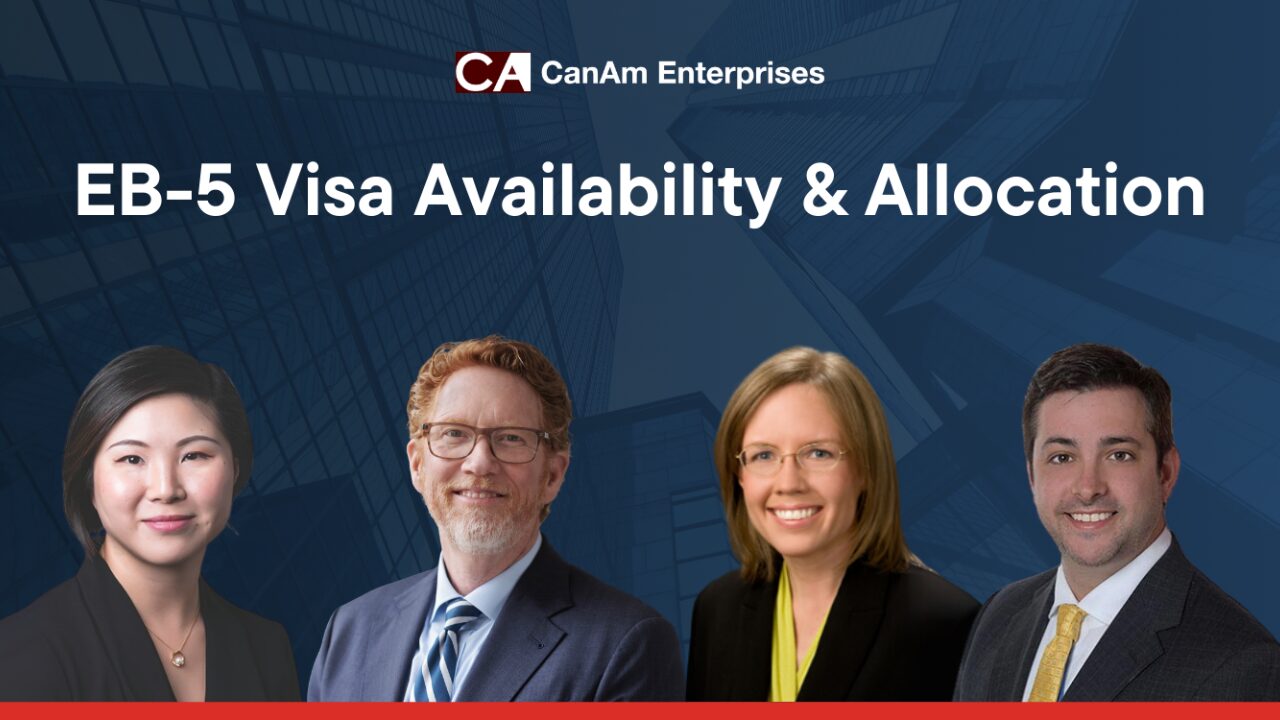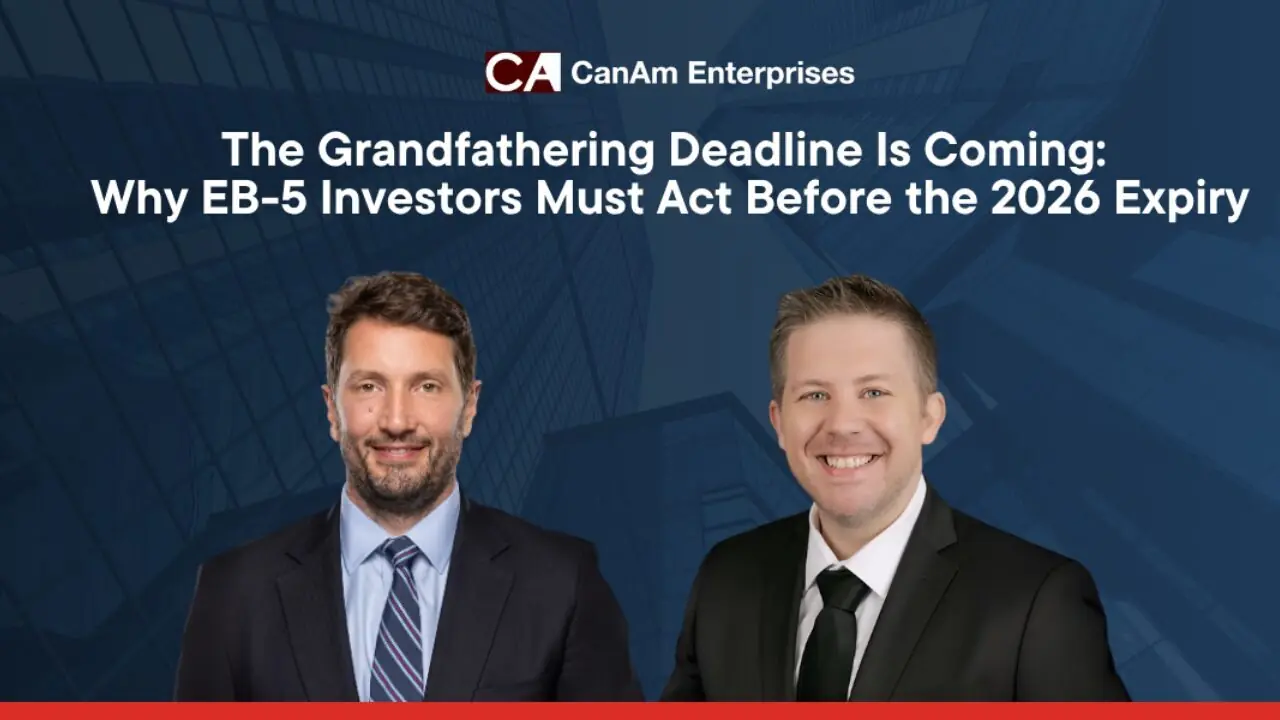A transição de um visto de trabalho H-1B para um visto de investidor EB-5 está a tornar-se um caminho cada vez mais viável para profissionais estrangeiros qualificados que trabalham nos EUA. Com o crescente descontentamento e limitações em torno do sistema H-1B, muitos estão a explorar opções de imigração alternativas. O programa de visto EB-5, com a sua promessa de residência nos EUA em troca de um investimento substancial, oferece um caminho único para garantir um green card com maior flexibilidade e controlo sobre o seu futuro.
Compreender o sistema de vistos H-1B
O visto H-1B é um visto de trabalho não imigrante concebido para cidadãos estrangeiros em ocupações especializadas, principalmente em sectores como a tecnologia, a engenharia e os cuidados de saúde. Embora ofereça aos trabalhadores qualificados uma oportunidade de trabalhar nos EUA, também apresenta limitações e desafios, especialmente em relação à mobilidade profissional e à residência de longo prazo. Os portadores do visto H-1B dependem dos seus empregadores para obter patrocínio, o que significa que estão vinculados a empregos e empresas específicos, o que restringe a flexibilidade e a progressão na carreira.
Além disso, os titulares de vistos H-1B enfrentam frequentemente longos períodos de espera para obterem green cards, especialmente os de países com atrasos, como a Índia e a China. Esta situação tem deixado muitos profissionais presos num ciclo de incerteza, com renovações periódicas do seu estatuto de visto e restrições para viajar ou mudar de empregador.
Visto EB-5: Uma nova oportunidade para os titulares de H-1B
O programa EB-5, por outro lado, oferece um caminho diferente. Ao abrigo deste programa, os investidores estrangeiros que invistam um mínimo de $800.000 (em determinadas áreas designadas) numa empresa americana que crie pelo menos 10 postos de trabalho para trabalhadores americanos podem obter residência permanente para si próprios e para os seus familiares diretos.
O apelo do visto EB-5 reside na sua objetividade. Ao contrário de outras categorias de vistos, como o H-1B ou o National Interest Waivers, que podem envolver critérios subjectivos como o patrocínio do empregador ou a prova do seu valor para a economia dos EUA, o processo EB-5 é puramente baseado em números. Como George Ganey, um perito experiente no EB-5, observou numa discussão recente:
“O EB-5 traz certezas… não há necessariamente uma abordagem baseada nas competências, mas há muita incerteza quando precisas de patrocinar, precisas de estar continuamente empregado, etc.”
Alterações recentes ao programa EB-5 que beneficiam os titulares de H-1B
Várias alterações legislativas e regulamentares tornaram a transição de um visto H-1B para um visto EB-5 ainda mais atractiva. Estas reformas, introduzidas em 2022, simplificaram o processo, reduziram os tempos de espera e proporcionaram mais flexibilidade aos investidores.
- Processamento prioritário para investimentos rurais: Uma mudança significativa é a introdução do processamento prioritário para investimentos EB-5 em áreas rurais. Este processamento acelerado tornou a obtenção de um “green card” através do EB-5 mais rápida, especialmente quando comparada com as categorias de vistos EB-2 ou EB-3 tradicionais, que têm muitas pendências.
- Apresentação simultânea da I-526 e da I-485: Outra alteração notável é a possibilidade de apresentar um pedido de ajustamento de estatuto em simultâneo com a petição I-526 (o primeiro passo no processo EB-5). Isto é particularmente vantajoso para os titulares de H-1B que já se encontram nos EUA, uma vez que lhes permite permanecer no país e trabalhar enquanto o seu pedido de “green card” é processado.
- Aumento da Conformidade e Transparência: As medidas de integridade introduzidas em 2022, através do Regional Center Integrity Act, também melhoraram a transparência e a fiabilidade dos centros regionais EB-5. Isso mudou o jogo para os investidores que podem não ter o valor total do investimento adiantado, pois eles podem se sentir mais seguros sobre sua parceria com um centro regional.
Vantagens do EB-5 em relação ao H-1B
O programa EB-5 oferece várias vantagens em relação ao sistema H-1B para aqueles que se qualificam:
- Independência em relação aos empregadores: Ao contrário do visto H-1B, que vincula o titular do visto a um empregador específico, o visto EB-5 permite que os investidores trabalhem para qualquer empresa ou iniciem o seu próprio negócio. Esta flexibilidade é particularmente atractiva para os empresários e para aqueles que querem procurar oportunidades sem os constrangimentos do patrocínio do empregador.
- Caminho mais rápido para a Residência Permanente: Para aqueles que conseguem cumprir os requisitos financeiros, o programa EB-5 oferece um caminho mais direto para a carta verde. Como George Ganey salientou, “Os clientes que investiram em projectos rurais… têm o green card em mãos três semanas após a aprovação do I-526E.”
- Flexibilidade no emprego: O visto EB-5 também permite uma mobilidade muito maior no mercado de trabalho. Os titulares de H-1B enfrentam muitas vezes restrições à mudança de emprego ou de empregador, e qualquer despedimento pode colocar o seu estatuto de visto em risco. Ao fazer a transição para um EB-5, os titulares do visto podem assumir o controlo das suas carreiras sem a preocupação constante da renovação do visto.
- Inclusão da família: O programa EB-5 concede residência permanente não só ao investidor, mas também ao seu cônjuge e filhos solteiros com idade inferior a 21 anos. Isto pode ser uma vantagem significativa para as famílias que procuram estabelecer uma residência de longa duração nos EUA.
Investimentos parciais e flexibilidade dos empréstimos
Um desafio que os potenciais investidores EB-5 enfrentam frequentemente é a liquidez. Os titulares de H-1B, especialmente os que ganham salários elevados ou são compensados com opções de compra de acções, podem não ter acesso imediato ao investimento total de $800.000 exigido pelo programa EB-5. No entanto, como explica Ganey, os investimentos parciais e a utilização de fundos de empréstimo são cada vez mais aceites como opções viáveis para fazer o investimento EB-5.
Muitos centros regionais, como a CanAm, oferecem flexibilidade para permitir investimentos parciais ou estruturar empréstimos para facilitar o investimento. Esta abordagem permite aos investidores iniciar o processo EB-5 sem necessidade de liquidar imediatamente os activos ou acumular o montante total do investimento antecipadamente.
O futuro do EB-5 para os titulares de H-1B
Embora a transição do H-1B para o EB-5 ofereça inúmeras vantagens, é importante notar que pode não ser uma opção viável para todos. Os requisitos financeiros do programa EB-5 podem ser
proibitivo para muitos, e não há garantias de que o programa venha a registar um afluxo maciço de titulares de H-1B num futuro próximo.
No entanto, para aqueles que conseguem cumprir os critérios de investimento, o visto EB-5 proporciona um caminho mais rápido, mais flexível e mais fiável para a residência permanente nos EUA. À medida que mais detentores de H-1B ficam frustrados com as limitações do sistema H-1B, é provável que o programa EB-5 continue a atrair profissionais altamente qualificados que procuram assegurar o seu futuro nos EUA.
Em conclusão, embora a transição do H-1B para o EB-5 possa não ser adequada para todos, oferece uma alternativa poderosa para aqueles que procuram assumir o controlo do seu estatuto de imigração, reduzir a dependência do patrocínio do empregador e obter a residência permanente de uma forma mais simplificada e previsível.




